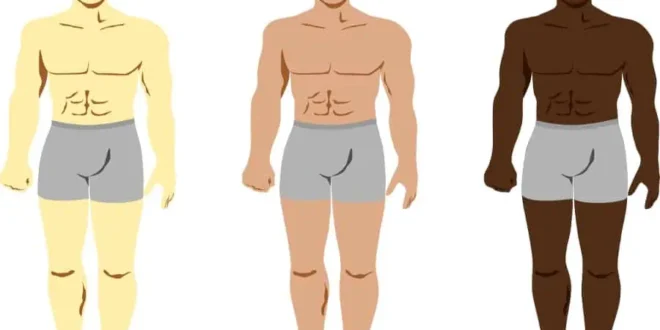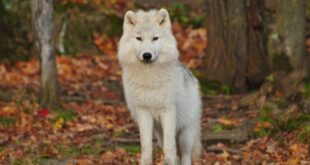Humans are undeniably the most intelligent and advanced species on the planet, which makes you wonder, why humans are so weak.
It’s true; humans are weak when compared to many other animals. We lack the speed, agility, strength, and endurance of animals our size.
From our skeletal structure to our muscle fibers, there is a multitude of reasons why we are not as physically powerful as other species on Earth. And these weaknesses shape our existence and influence our interactions with the world.
By gaining insights into our limitations, we may uncover a deeper understanding of what it means to be human and find inspiration to transcend our weaknesses and embrace our strengths. So let’s get into it.
Modern humans are weak because physical strength is no longer necessary for survival.
Over the years, we have learned how to outrun and compete much smarter and more efficiently with other animals. Which led to developing our brains rather than muscles for physical strength.
The following section will further explain how we got where we are, more intelligent but weaker compared to animals our size.
Due to climate change, our ancestors were forced to migrate to the African savannah about 6-7 million years ago.
However, semi-arboreal apes could not compete with the highly evolved apex predators already there.
Despite this, they had evolved as skilled hunters and gatherers in the jungle, which helped them, survive in this new environment.
They soon realized the best way to avoid confrontation with lions was to hide during their active hours and hunt during the hottest part of the day.
Alternatively, they would harass large prey until exhausted and then target and kill them easily.
This adaptive behavior allowed our ancestors to survive and thrive in an extremely challenging environment. Some African tribes still use this method to hunt down predators and other animals.
Our ancestors looked quite similar to us and had brains twice the size of their increasingly distant cousins. However, the discovery of fire, crude stone tools, and gestures marked a turning point in human evolution.
Our brains exploded with intelligence and problem-solving abilities. This event led to a tipping point where intelligence became the dominant survival trait, much like being big was previously dominant.
Human evolution involves significant sacrifices that facilitated our rapid intellectual growth. One such sacrifice was amplifying a gene mutation that was otherwise harmful.
In fact, the researcher who discovered this mutation initially believed it to be a new form of muscular dystrophy. However, later found that every human carries this mutation.
This particular mutation leads to weaker and smaller jaw muscles than other primates. But, this adaptation has allowed for the development of larger brains as it made room for brain expansion.
With the advent of fire and stone knives, strong jaws became obsolete, and we began to rely more on our cognitive abilities.
The human species has undergone numerous genetic mutations, and many of these changes may have been fatal in other species.
However, in the case of humans, these mutations have resulted in a shift towards a more delicate and graceful physical appearance.
These changes have made us less reliant on our physical strength and size and more focused on preserving calories for our brains, which are critical to our survival.
In addition, we have evolved to walk more softly while wielding sharper weapons, allowing us to hunt and defend ourselves more effectively. With all that said, the underlying genetic changes remain the driving force behind our evolution.
Human Physical Traits That Have Been Phased Out As A Result Of Evolution
Several traits have been phased out or significantly reduced throughout human evolution due to various adaptations and changes. Here are some evolutionary traits that humans have evolved:
- Body Hair – Unlike our ancestors, who had thick hair all over their bodies, modern humans have much less hair, particularly on our faces and limbs. We no longer need it to keep us warm or protect us from the sun.
- Robust Jaw and Teeth – Our ancestors had much more robust jaws and teeth to help them chew tough, fibrous foods. However, our diets have become more refined and processed, our jaws smaller, and our teeth less powerful.
- Cranial Crests and Brow Ridges – Early human species, such as Homo erectus, exhibited prominent cranial crests and brow ridges. These features provided structural support and protection but have gradually decreased in size as our brains grew larger.
- Third Molar – Our early ancestors needed these teeth to help them chew tough foods, but as our diets have changed, these teeth have become smaller and less necessary.
- Erect Posture and Adapted Pelvis – Several skeletal adaptations occurred as humans transitioned to walking upright. The shape of the pelvis is altered to accommodate the change in posture and facilitate the birthing process.
- Reduced Olfactory Bulb – Olfactory bulb is part of the brain responsible for our sense of smell. As humans have become more reliant on our other senses, such as sight and hearing, the olfactory bulb has decreased in size resulting in a diminished sense of smell.
- The Appendix – Once thought to serve a purpose in digestion, the appendix is now vestigial and no longer necessary for survival. In fact, removing the appendix does not lead to significant health problems.
- The Palmer Grasp Reflex – Refers to the automatic grasping of objects by an infant’s hand. This reflex is an evolutionary remnant from our primate ancestors, who relied on gripping branches and their mothers’ fur.
However, as we evolved and manual dexterity became more crucial for manipulating tools and objects, this reflex reduced significantly.
The gradual development of fine motor skills and voluntary control over hand movements replaced the primitive grasp reflex in later stages of human development.
9. The tailbone – While early humans may have had tails for balance and mobility, as we evolved to walk upright on two legs, the tail became unnecessary and eventually disappeared.
5 Signs That Humans Are Getting Weaker
Amid the comforts and conveniences of sedentary life, there are subtle indicators that humans are gradually growing weaker.
And this raises important questions about the impact of our evolving lifestyle, environmental changes, and genetic factors on our physical strength and overall health.
1. Decreased grip
One sign indicating a potential weakening of humans is a decrease in grip strength. It might be due to reduced manual labor and increased sedentary lifestyles. Weaker grip strength can have implications for overall functional abilities.
2. Reduced lung capacity
You can’t compare our current lung size and that of our ancestors. Having sufficient lung capacity ensures an adequate oxygen supply to the body’s tissues and organs.
Reduced lung capacity, on the other hand, means that the lungs cannot take in or expel as much air as they should.
If you have reduced lung capacity, you will experience fatigue more quickly, struggle with strenuous activities, and have difficulty recovering from physical exertion.
3. Weak bone strength
It can be due to a lack of calcium and vitamin D in the diet or a sedentary lifestyle. Weak bones can increase the risk of fractures and osteoporosis, particularly in older adults.
4. Limited mobility
Unlike our quadrupedal ancestors who possessed remarkable agility and speed, we have adapted to walking upright, sacrificing some of that natural mobility.
Our ancestors effortlessly leaped from tree to tree, a skill that remains beyond our reach, existing only in our dreams as a testament to our diminished physical capabilities.
While our upright stance brought unique advantages, it came at the cost of the extraordinary mobility possessed by our predecessors, a reminder of the evolutionary trade-offs we have made.
Conclusion
If you wanted to know why humans are so weak, now you have your answer. Throughout our evolutionary journey, humans have undergone changes that have led to a trade-off between physical strength and other advantageous traits.
Genetic factors, such as the amplification of certain gene mutations, have contributed to our weaker jaw muscles but have allowed for the development of larger brains, enhancing our cognitive abilities.
While it is true that humans may not possess the raw physical power of some other species, we have leveraged our cognitive abilities and resourcefulness to overcome these limitations.
We have created supportive social structures and adapted our environments to ensure our survival and advancement as a species.
 Being Human
Being Human




